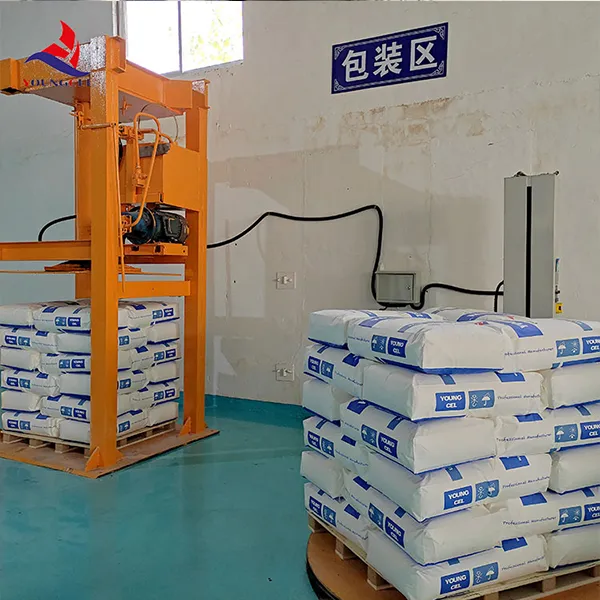Understanding Cellulose and HPMC Applications and Benefits
Cellulose, a natural polymer derived from plants, is one of the most abundant biopolymers on Earth. It serves as a fundamental building block in various industrial and commercial applications, particularly due to its biocompatibility, biodegradability, and versatility. Among the various derivatives of cellulose, Hydroxypropyl Methylcellulose (HPMC) has gained significant attention owing to its unique properties and wide-ranging applications.
HPMC is a modified cellulose that is created through the chemical modification of cellulose fibers, where hydroxypropyl and methyl groups are introduced into the cellulose structure. This alteration results in a product that is soluble in water and has a low viscosity, making it particularly useful in a plethora of applications. HPMC possesses several key characteristics that set it apart, including film-forming capabilities, thickening properties, and emulsification. These traits make HPMC highly valuable in various fields, including pharmaceuticals, food processing, construction, and cosmetics.
In the pharmaceutical industry, HPMC is widely utilized as a binder and film-coating agent in solid dosage forms such as tablets and capsules. Its ability to provide controlled-release properties ensures that medications are released over a specified duration, enhancing the therapeutic efficacy of the drugs. Furthermore, HPMC is recognized for its compatibility with various active pharmaceutical ingredients, making it an ideal choice for formulators aiming to develop effective and stable drug delivery systems.
The food industry also benefits from HPMC’s unique attributes. It is frequently used as a thickener, stabilizer, and emulsifier in a variety of food products, including sauces, dressings, and baked goods. HPMC can improve the texture and mouthfeel of these products, offering a desirable consistency without adding unwanted calories or fat. Additionally, as a gluten-free ingredient, HPMC is particularly appealing in the production of gluten-free foods, providing the necessary binding and texture that gluten traditionally offers.
celulose hpmc

In construction, HPMC plays a crucial role as a water retention agent in cement and gypsum-based products. Its ability to retain water allows for improved workability of materials and prolongs the setting time, enabling better application and finishing. This is particularly important in processes such as tile adhesive formulation and plaster applications, where adequate adhesion and mechanical strength are essential.
The cosmetic and personal care industries also leverage the properties of HPMC. It is commonly found in lotions, creams, and gels, where it acts as a thickening agent and stabilizer. HPMC helps enhance the viscosity of formulations, ensuring that they have a pleasant texture and are easily spreadable on the skin. Moreover, its non-toxic and hypoallergenic nature makes it suitable for sensitive skin formulations, reinforcing its desirability among manufacturers and consumers alike.
Beyond its applications, the environmental advantages of cellulose-based products like HPMC are noteworthy. As a renewable resource derived from natural sources, HPMC aligns well with the growing demand for sustainable materials. Its biodegradability adds to its appeal, particularly as industries and consumers increasingly prioritize eco-friendly options.
In conclusion, cellulose and Hydroxypropyl Methylcellulose exemplify the potential of natural polymers in various sectors. From pharmaceuticals to food, construction to cosmetics, the applications and benefits of HPMC are diverse and significant. As industries continue to seek sustainable and effective solutions, the role of cellulose derivatives like HPMC will undoubtedly expand, paving the way for innovative applications and advancements in technology. As research progresses, we can anticipate even more creative uses for these invaluable materials, contributing to a more sustainable and efficient future.
-
A Comprehensive Guide to Methyl Ethyl Hydroxyethyl Cellulose: Applications and Industry InsightsNewsNov.24,2025
-
Understanding Methyl 2 Hydroxyethyl Cellulose: Uses, Benefits & Industry InsightsNewsNov.24,2025
-
Hydroxyethyl Methyl Cellulose HEMC: Industrial Uses, Benefits & Future TrendsNewsNov.23,2025
-
HEMC Cellulose: Versatile & Sustainable Industrial Polymer | YoungcelNewsNov.23,2025
-
Methyl Hydroxyethyl Cellulose: Versatile Building Block for Industry & SustainabilityNewsNov.23,2025
-
CAS 9032 42 2: Understanding Polyvinyl Alcohol's Impact on Industry & SustainabilityNewsNov.22,2025




